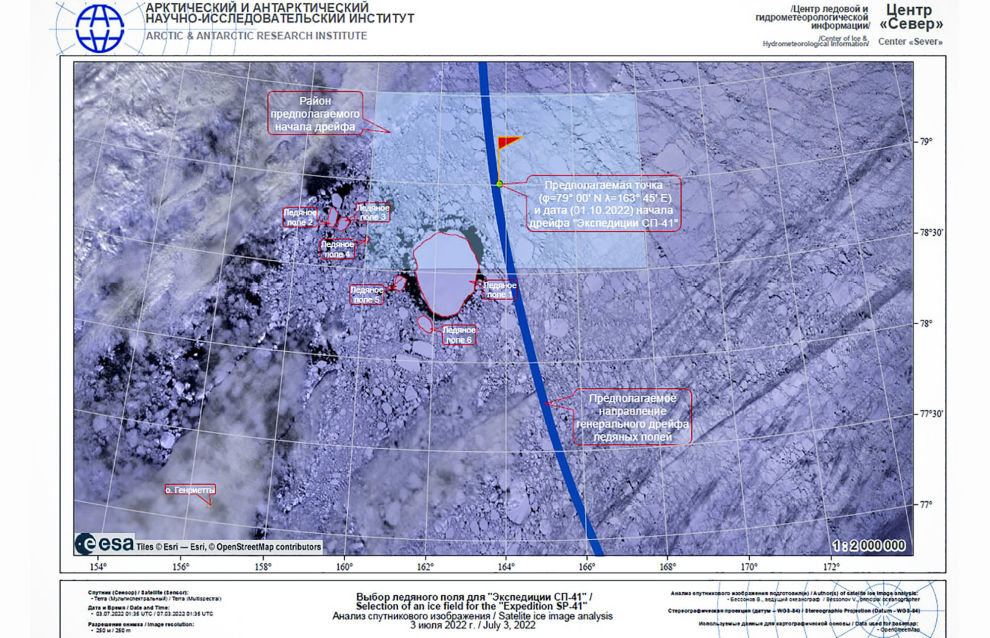Crew of North Pole ice-resistant platform in search of ice floe for research work
Scientists are looking for an ice floe to set up a research camp for the North Pole 41 drifting polar expedition. A suitable base will be selected from a Kamov Ka-32 helicopter.
For more than a year and a half, experts from the Institute of the Arctic and Antarctic have been monitoring ice floes in the area where the North Pole ice-resistant platform is supposed to start a drift. They will make their final choice in the Arctic, directly at the starting point of the drift.
“An ice reconnaissance crew will conduct an aerial inspection on board a helicopter to select suitable ice floes. The next stage is landing on an ice floe to further explore it, and determine its age and thickness. The scientists will choose the right candidate based on these parameters. Then our job will be to secure the North Pole ice-resistant platform next to an ice floe. The platform can be moored to the selected ice floe close to its edge, and more ice will eventually build up. Another option is the platform will navigate deeper into the drifting ice with the help of the Akademik Treshnikov scientific research expedition. The chances of reaching the right ice floe will increase; however, more time is required and there is a risk of damaging the ice cover. The scientists will decide on the right method based on the actual conditions,” said Alexander Makarov, director of the Institute of the Arctic and Antarctic.
The prospective launch point is located in the Arctic Ocean to the north of Henrietta Island. In late September, the North Pole expedition will arrive in the area to start a two-year drift, with its trajectory mapped through the circumpolar region and the Greenland Sea. Once the platform has passed through the Fram Strait, it will return to Murmansk using its own power.
